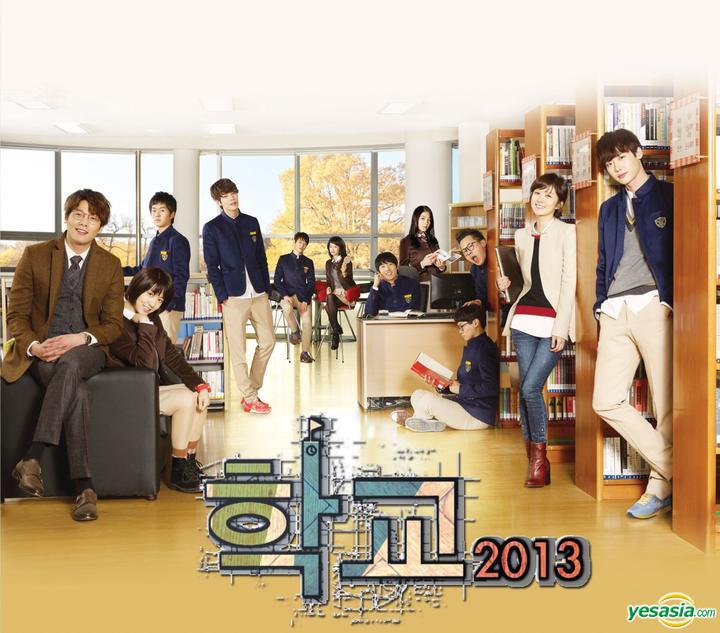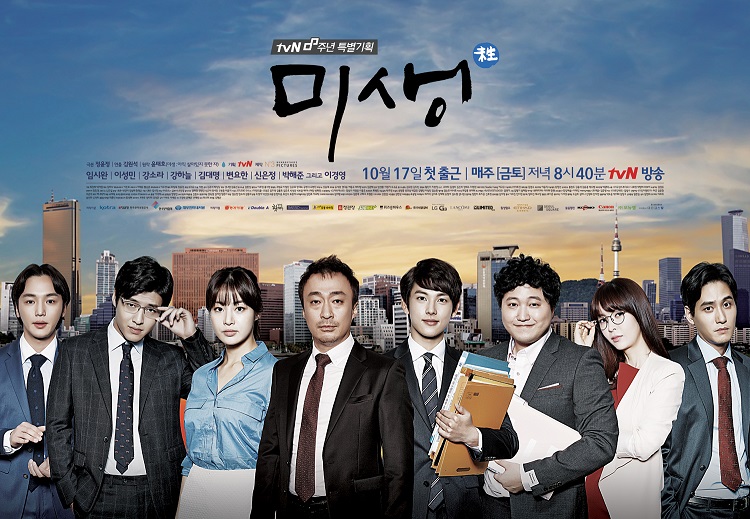K-Dramas as a Window into the Realities of Korean Society
K-dramas, at times crazy and out of the world, at times melodramatic and tear-jerking, at times sugary with romance and heart-warming gestures, they are also at times very realistic in the depiction of real-life situations and problems in the Korean society. K-dramas are an integral part of the Korean entertainment scene and have played a big part in the globalization of Korea’s culture. From realistic dramas such as Misaeng and the School Series, a lot can be learnt about the Korean society and their way of life, especially for foreign viewers like me who have not experienced this first hand.
The Korean society can be a materialistic one, as shown in a Reuters poll where more than two-thirds of Koreans considered money to be the most important sign of success. When Pope Francis visited Korea in August, 2014, he also urged the Catholic youths in Korea to go against the materialism that was present in the society, showing that Korea’s materialistic society is indeed “well-known” and existent.
Traces of this particular aspect of the Korean society can be found all types of dramas, from teenage rom-coms to makjang weekend dramas (dramas with very dramatic plots, ranging from birth secrets to revenge, etc.) For example, in SBS’s currently airing drama, Heard It Through the Grapevine, Han In sang (Lee Joon) and his lover Seo Bum (Go Ah Sung) face many oppositions and challenges in their relationship from their families and parents because of their differing family backgrounds and economical status. This drama was even promoted as a black comedy to supposedly satirize materialistic ideas held by the upper class in Korea.
Another common problem in the Korean society accurately depicted by K-dramas is the wealth gap between the extremely rich and the extremely poor. These wealth gaps are depicted normally by “chaebol meets poor person and falls in love” scenarios in rom-coms. And through these dramas, these social classes and the resulting difference in lifestyles is also clearly brought out. Take the example of popular drama The Heirs. The drama is literally filled with rich chaebols, such as Kim Tan (Lee Minho) and Rachel Yoo (Kim Jiwon). In the midst of these rich kids however, there are a few poor ones, such as female protagonist Cha Eun Sang (Park Shin Hye) and Jeon Hyeon Ju (Lim Ju-Eun). The poor characters led significantly different lives compared to their richer counterparts, as shown by Eun Sang’s part time jobs and her mother, who worked as a servant in a rich household. Rachel, on the other hand, was consistently shown shopping extravagantly and her fashion was clearly more expensive than Eun Sang’s. In short, there is always a significant difference between the lives of the rich and the poor characters.
This problem is an existing one in the Korean society, due to factors such as the changing salary system, where a new ability-based system was implemented in efforts to improve Korea’s economy, thus increasing the income gap between professional and managerial workers. This can also be seen by the Gini Coefficient (measure of inequality of a distribution) for Korea, which increased from 0.256 to 0.280 between 1990 and 2013.
Also on KultScene: You’re Missing Out if You’re Not Watching The Cohabiting K-Drama ‘The Lover’
Skipping away from the technical economics of the complicated Korean society, let us move on to a more light-hearted topic, high schools. Characterized by trends such as glamorous school uniforms and light-hearted romances, school dramas generally attract a younger and more fun-loving audience, but there are still instances in which the cruelty of real life seeps in. For example, a theme that is recurrent in School 2013 is that of the struggle of studying and the stress of getting into a prestigious university. The students in the drama attend school from morning to night and a few of them are constantly shown cramming notes and studying feverishly to prepare for their university entrance exams (Sunueng). An example would be the character of Song Ha Kyung (Park Seyoung), who has immense pressure placed upon her by her family of S University graduates. As a result, she studies all the time (literally, I kid you not) and even resorts to drinking a combination of energy drinks to stay awake and study more, eventually landing herself in the hospital.
This is an extremely realistic situation of the students in Korea now. The long school hours and all the time taken for studying leaves students with no time to think about their dreams and their future as they only have time to study. The reason for all this stress? According to an article from Aljazeera News, college entrance exams are seen as the gateway to a better future, and as a student interviewed in the article stated, it “can determine the rest of your life.” Getting a good score in this exam could lead to entrance into prestigious universities and the achievement of a high paying job and a potentially better marriage.
Another character in this drama that showcases the negative impacts of this study-inflicted stress is Kim Minki Choi ChangYub). Always a model student, Min Ki is a nice and kind boy, who has on many occasions helped his fellow classmates and teachers. His mother, on the other hand, constantly comes to the school to make complaints against the teachers and principals for the “poor teaching standard,” causing Min Ki a lot of embarrassment and stress. She also sends her son to attend private academies after school and even helps him cheat so that he would achieve better grades. Needless to say, this does not bode well with him, and after several years of submitting to his mother, he finally reaches his breaking point when his mother gives him the answer key for an essay competition. Unable to take the pressure anymore, he goes to the rooftop of his school and contemplates suicide. Fortunately for Min Ki, he manages to reconsider his decision and with the help of his caring teacher, Jung In Jae (Jang Nara), he reconciles with his mother and settles his problems.
Sadly, there are many students in Korea who are not as lucky as Min Ki and have succumbed to their internal struggles. This can be seen by the high suicide rate recorded of Koreans, which is at an average of 28.5 people per 100,000 people, one of the highest in the world, according to statistics from the World Health Organisation in 2013. Suicide is indeed the number one cause of death for South Koreans aged 10 to 30.
Also on KultScene: BoA ‘Kiss My Lips’ Music Video & Song Review
When we talk about a society, we can never neglect the working class as they are the basis of a society’s economy. Perhaps the office life may seem too mundane and boring to ever base an entire drama upon, but as proven by the unexpected hit of 2014, Misaeng, realistic office dramas do indeed tug at the heartstrings of viewers due to its relatability and accurate portrayal of the problems in the society. Take for example, the problem of gender discrimination. This is especially poignant in the case of Ahn Young Yi (Kang Sora), who was initially one of the most promising and successful interns in the office before she was transferred to a department full of men who were biased against her. Although she conquered it and won their respect in the end, the lack of respect she was shown because of her gender is a real-life problem that many women in the world (not just in Korea) still face now.
Another real-life situation illustrated through this drama would be the importance of education in one’s career. The main character, Jang Geu Rae (Im Siwan) faced the problem of only knowing one language on his first day at work, as he was unable to answer and understand the calls made to the office by foreign businessmen. He was also looked down upon by his fellow co-workers because he graduated with only a high school diploma. In a direct contrast, Ahn Young Yi was able to succeed at her job because she was fluent in several languages was competent and had more experience as well.
There are plenty of K-dramas out there apart from the ones listed above that also depict several realities of the Korean society, and while some of them may be overly grim or too unrealistic, they are definitely still helpful for viewers to gain a better understanding of the real Korean society and way of life.
How accurate do you think are K-dramas in portraying real life? Do you think that K-dramas should even be so realistic? Share your thoughts in the comment section below and be sure to subscribe to the site and follow us on Facebook, Twitter, Instagram, and Tumblr to keep up with all of our posts.


